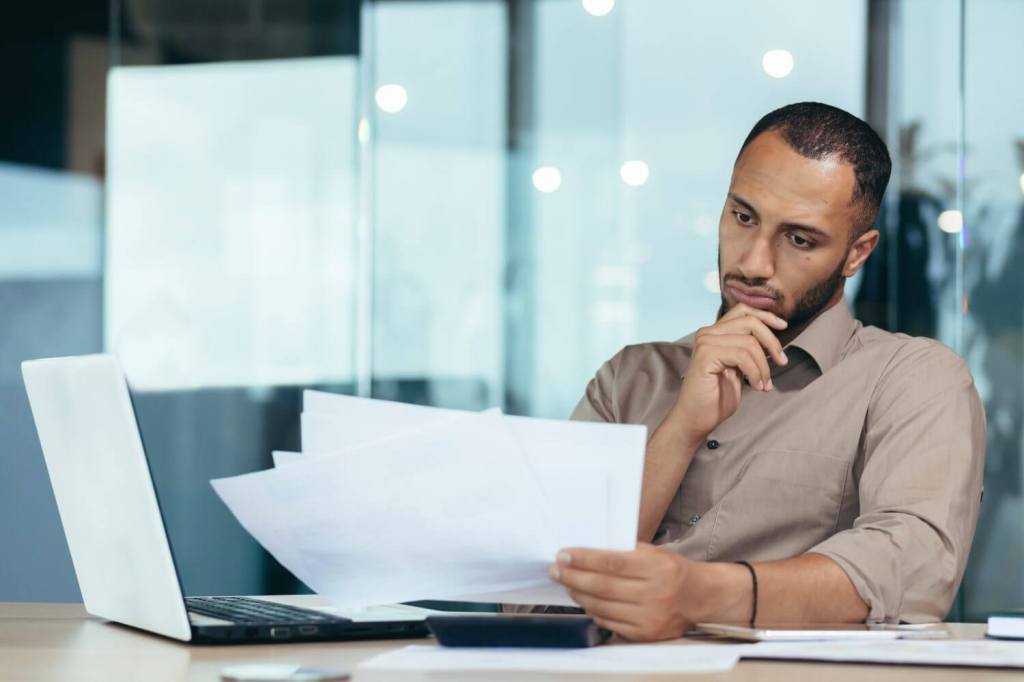Set up your personal tax account with HMRC to check your records and manage your tax details online.
This can save you time and make it easier to manage important information such as your tax records, your National Insurance details, and your pension.
In this article, we cover five key topics on setting up a personal tax account:
- What is a personal tax account?
- What is a personal tax account used for?
- Why should the self-employed set up a personal tax account?
- How to set up your personal tax account
- How do I manage my personal tax account?
What is a personal tax account?
HMRC introduced the personal tax account in December 2015 as a way to make it easier for people to see and manage their tax details online.
By signing up to the personal tax account, HMRC hopes that you’ll be able to manage your details and records online rather than phoning or writing to them.
HMRC’s phone lines haven’t always been completely reliable, so if you haven’t set up your personal tax account yet, doing so now could save you time in the future.
What is a personal tax account used for?
The tax office says you can use your personal tax account to:
- check your income tax estimate and tax code
- fill in, send, and view a personal tax return
- claim a tax refund
- check and manage your tax credits
- check your state pension
- track tax forms that you’ve submitted online
- check or update your Marriage Allowance
- tell HMRC about a change of address
- check or update benefits you get from work, for example company car details and medical insurance
- find your National Insurance number
They say that more services will be added in the future.
Why should the self-employed set up a personal tax account?
There are lots of reasons to create a personal tax account if you’re self-employed.
HMRC says that if you’re self-employed or a Self Assessment customer, you can use your account to:
- find out your Unique Taxpayer Reference (UTR)
- read any secure messages
- file your Self Assessment
- see and print your tax calculation
- appeal a Self Assessment late filing penalty
- tell HMRC you’re no longer self-employed
- see your HMRC Annual Tax Summary online
- apply to reduce your payments on account if your circumstances change
You can also use your account to manage your National Insurance record and see your State Pension forecast (including how much you can get and when you can get it).
It’s important to plan for your retirement. Our guide to pension options for self-employed people has more information.
How to set up your personal tax account
It shouldn’t take too long to register for HMRC personal account. The self-employed will have a head start, because you should have a Government Gateway user ID. You get this when registering as self-employed and you use it when filing your Self Assessment online.
- first, you need to verify your identity with HMRC. This is where you can sign in using your existing Government Gateway ID – be sure to have your National Insurance number to hand
- you need your 12-digit user ID and your password. After you enter those, you should choose how you receive a six-digit access code, which adds an extra layer of security
- if you don’t already have a Government Gateway ID you can set one up here – if you’re self-employed and haven’t registered yet, you should do so at the earliest opportunity. You’re legally obliged to register by 5 October of your business’s second trading year
Once you’ve signed in using your Government Gateway ID, HMRC will ask you some more questions to verify your identity (it might be helpful to have your passport to hand for this, if you have one).
It’s important to be vigilant about scams – here’s how to check whether contact from HMRC is genuine.
How do I manage my personal tax account?
After you’ve signed up and registered you should be all set to start managing your tax records.
You’ll see a menu page split into separate sections that let you manage the different elements of your tax details.
You’ll also be able to do things like choose to go paperless, let HMRC know if you’ve changed address, and track forms you’ve submitted online. Find out more about HMRC’s Making Tax Digital plans.
Sign in and manage my online personal tax account
If you’ve set up your personal tax account with HMRC, how did you find the process? Let us know in the comments below.
More useful tax articles
- The self-employed guide to Self Assessment tax returns
- SA302 – your guide to getting your tax calculation
- Time to Pay – how to set up an HMRC payment plan
- How much business insurance do I need?
Looking for self-employed insurance?
With Simply Business you can build a single self employed insurance policy combining the covers that are relevant to you. Whether it’s public liability insurance, professional indemnity or whatever else you need, we’ll run you a quick quote online, and let you decide if we’re a good fit.
Moon Luibomir/stock.adobe.com

This block is configured using JavaScript. A preview is not available in the editor.